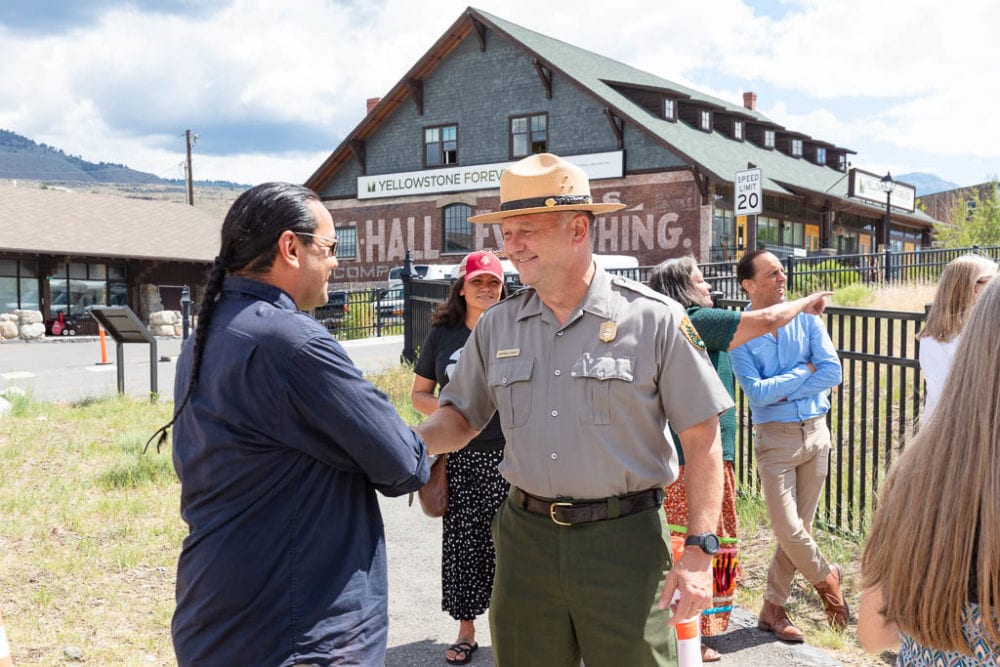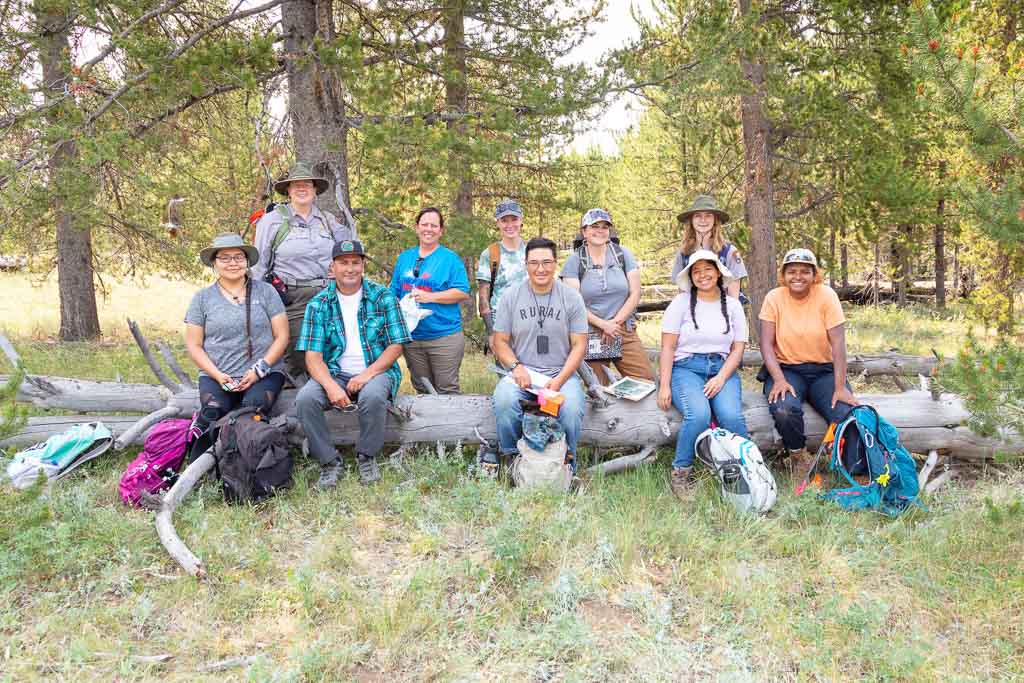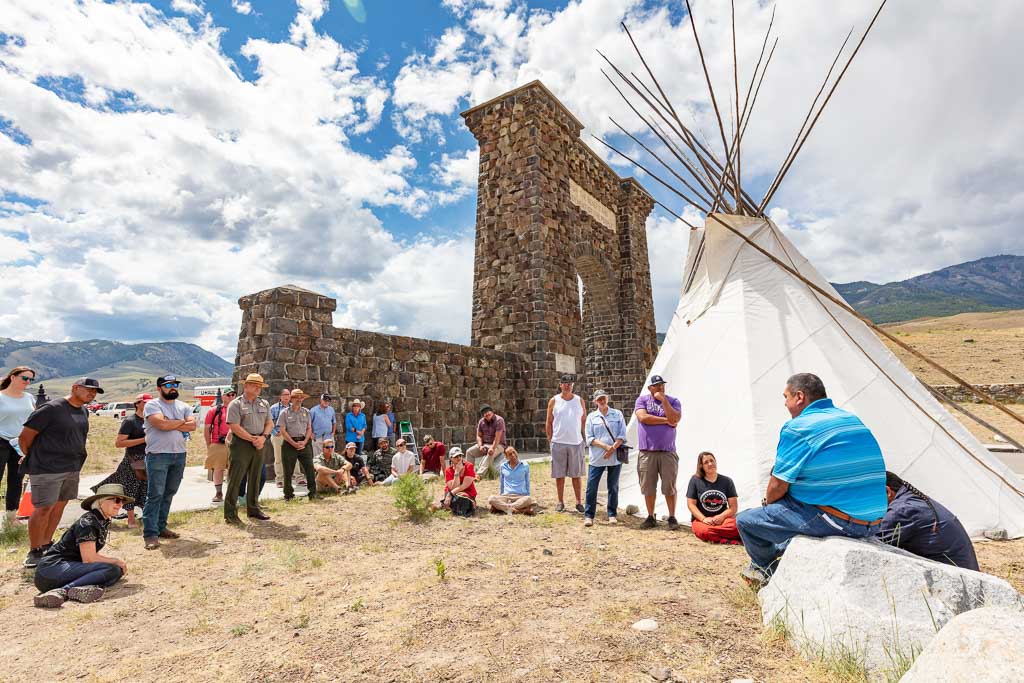Yellowstone Engages With Native American Tribes to Expand Tribal Representation in the National Park
Next year, 2022, marks the 150th anniversary of Yellowstone National Park, the first national park in the world. While the creation of the park was critical to ensure landscape preservation and wildlife protection in a magnificent part of the West, the era also saw the displacement of Native American Tribes who’d lived there for centuries, if not millennia.
So now, as this landmark anniversary approaches, Yellowstone National Park is engaging with Tribes to find “potential actions to expand tribal presence and representation of their important cultural heritage in the park during the anniversary and beyond”, as stated in a recent National Park Service press release.

Yellowstone National Park Engages With Tribes to Improve Partnerships
Before the park was established, the area that is now Yellowstone National Park had been home to Native Americans for over 11,000 years.
These are the ancestral lands of 27 associated Tribes, all of whom can claim both historic and modern links to the lands and natural resources now located within the national park.
Yellowstone National Park Superintendent Cam Sholly said that the park’s intent is “to partner with associated Tribes to better honor their significantly important cultures and heritage in this area. The engagement we’re doing now will help set a stronger foundation for collaboration well into the future.”
“Our goal is to substantially engage every Tribe connected to Yellowstone. It’s very important that the 150th anniversary is not just about Yellowstone as a national park but also a pivotal opportunity for us to listen to and work more closely with all associated Tribes.”
Yellowstone National Park Superintendent Cam Sholly
How Yellowstone and Native American Tribes (Can) Work Together
There are several initiatives and proposed projects on which Yellowstone engages Tribes.
In the past, for example, the park has collaborated closely with several Tribes on the management of American bison. This included the recent relocation of bison from Yellowstone to the Assiniboine and Sioux Tribes of the Fort Peck Indian Reservation in northeastern Montana.
Additionally, Yellowstone National Park and the faculty of Native American Studies at Salish Kootenai College also entered into a multi-year partnership. This partnership brings a “unique understanding of the importance of archaeological resources within the park”, according to the press release.

Of course, working together to relocate bison and partnering with Tribal Colleges is just the start. After nearly 150 years, greater Native American presence and representation in Yellowstone National Park is long overdue.
To improve this, recent dialogues between Yellowstone and Tribes focused on ways the park can better tell tribal stories. The park continues to engage Tribes to expand tribal presence within Yellowstone National Park, long beyond that 150th anniversary.
A good example of this was a listening session that took place last April. During this session, Yellowstone National Park officials and associated Native American Tribes talked about possible actions and initiatives for collaborations.
The conversation was continued in June, when Superintendent Sholly and other park staff met with members from various Tribes and Tribal Colleges. These discussions were convened by Mountain Time Arts and further supported by the National Parks Conservation Association.

Both parties, Yellowstone and its associated Tribes, strengthened their relationship and created a vision for the future, which will include the interests of both the national park and the Native American Tribes.
“The week included a ceremony at the park’s North Entrance with a temporary installation of a Crow-style teepee. Tribal members told the story of the teepee’s origin and sang an honor song.”
Recommended Blog Post: 22 National Parks That Preserve Native American Heritage
Native American Tribes Associated With Yellowstone National Park
- Assiniboine and Sioux
- Blackfeet
- Cheyenne River Sioux
- Coeur d’Alene
- Comanche
- Colville Reservation
- Crow
- Crow Creek Sioux
- Eastern Shoshone
- Flandreau Santee Sioux
- Gros Ventre and Assiniboine
- Kiowa
- Little Shell Chippewa
- Lower Brule Sioux
- Nez Perce
- Northern Arapaho
- Northern Cheyenne
- Oglala Sioux
- Rosebud Sioux
- Salish and Kootenai
- Shoshone–Bannock
- Sisseton Wahpeton
- Spirit Lake
- Standing Rock Sioux
- Turtle Mountain Band of the Chippewa
- Umatilla Reservation
- Yankton Sioux






